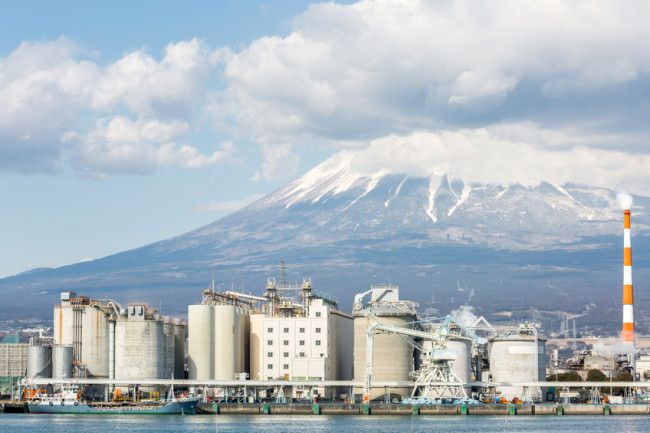The Japanese chemical industry is the country’s second largest manufacturing industry behind transportation machinery.
In its broader definition, which also includes plastic and rubber products, it made up over 14 percent of all output value in Japanese manufacturing.
With around 860,000 people, it employs around 12 percent of Japan’s manufacturing-related workforce.
Transportation machinery includes Japan’s most notable industry, automotive, which in turn is highly dependent on raw materials provided by the chemical industry.
The Backbone of Japan’s Economy
As the strength of Japan’s economy lies in its industry, one can say that the chemical industry is the backbone of Japan’s economy.
And its scale is truly global. With around $300 billion of global shipment value in 2013, Japan’s chemical industry ranks third in the world. It follows China ($1,665 billion) and the U.S. ($812 billion), and precedes Germany ($244 billion) and South Korea ($177 billion).
The Japanese chemical industry is dominated by a group of major corporations. Most of them are highly diversified and sport a large number of subsidiaries.
They are typically embedded in a strong network of alliances with other companies through their membership in keiretsus, sets of companies with interlocking business relationships.
In 2013, five companies out of the world’s 30 leading chemical companies as measured in chemical sales were Japanese: Mitsubishi Chemical Corp. (rank 11, $27.7 billion), Mitsui Chemicals Inc. (rank 17, $18.9 billion), Sumitomo Chemical Co. Ltd. (rank 19, $18.1 billion), Toray Industries Inc. (rank 22, $16.7 billion), and Shin-Etsu Chemical Co. Ltd. (rank 29, $11.9 billion).
Besides many other larger companies, which include Asahi Kasei Corp. or Hitachi Chemical Co. Ltd. for example, there a multitude of smaller specialty chemicals firms producing on very high levels of product quality.
Industry Make-up
The Japanese Chemical Industry in a Broader Sense encompasses Plastics Products (3.8 percent of Japan’s total manufacturing value output), Rubber Products (1.1 percent), and the Chemical Industry in a Narrower Sense (9.4 percent).
The latter can be divided into five general areas: Fertilizers, which accounted for 1.2 percent of the Chemical Industry in the Narrower Sense in 2013, Inorganic Chemicals (7 percent), Organic Chemicals (42 percent), and End Products (49.9 percent).
Organic Chemicals include Basic Petrochemicals (9.4 percent of the total), Aliphatic Intermediates (4.8 percent), Cyclic Intermediates, Dyestuffs and Pigments (7.5 percent), Plastics (12.7 percent), Synthetic Rubbers (2 percent), and other organic chemicals (5.5 percent).
End Products include Oil and Fats, Soap, Detergents and Surfactants (3.9 percent of the total), Paints (3.5 percent), Drugs & Medicines (27.8 percent), Agricultural Chemicals (1.1 percent), Cosmetics and Toothpast (4.8 percent), Gelatins & Adhesives (1.1 percent), Photo-sensitized materials (1.1 percent), and other chemical end products (6.5 percent).
A Force to Reckon With
As with many other industries in Japan, strengths of the chemical industry are innovation and product quality.
In 2013, R&D expenditures stood at a strong $25 billion, accounting for 22 percent of R&D spending of total manufacturing in Japan.
Together with steady capital investments, which stood at $15 billion in 2013, and a constantly increasing overseas production ration (almost 21 percent in 2013), the Japanese chemical industry and its companies are and will continue to be a force to reckon with for their global customers and competitors.



No comments yet.